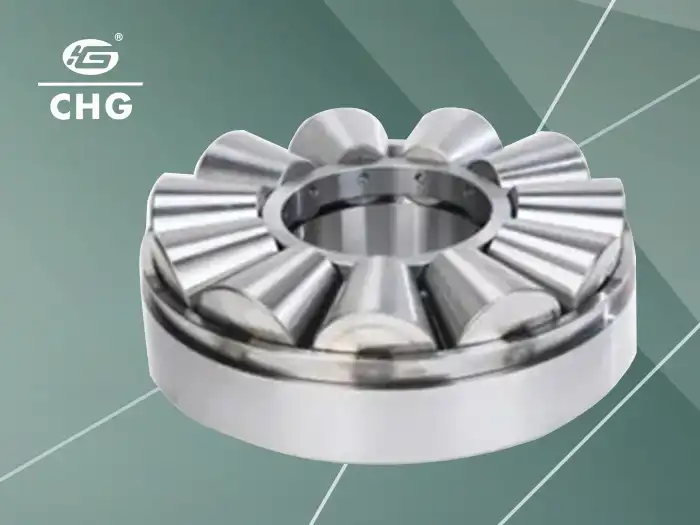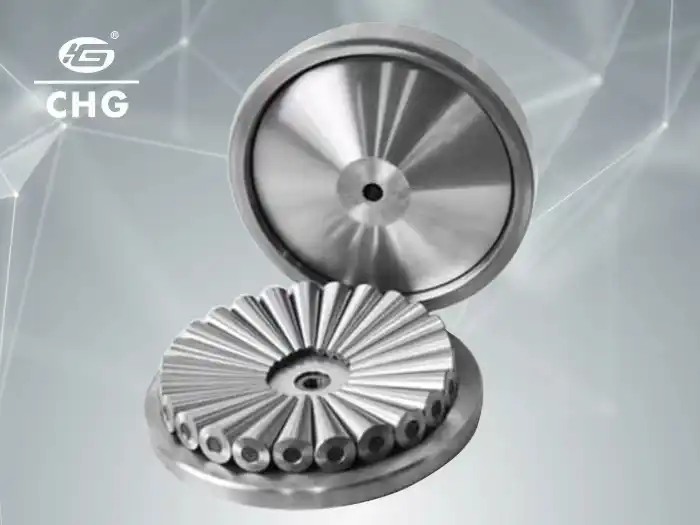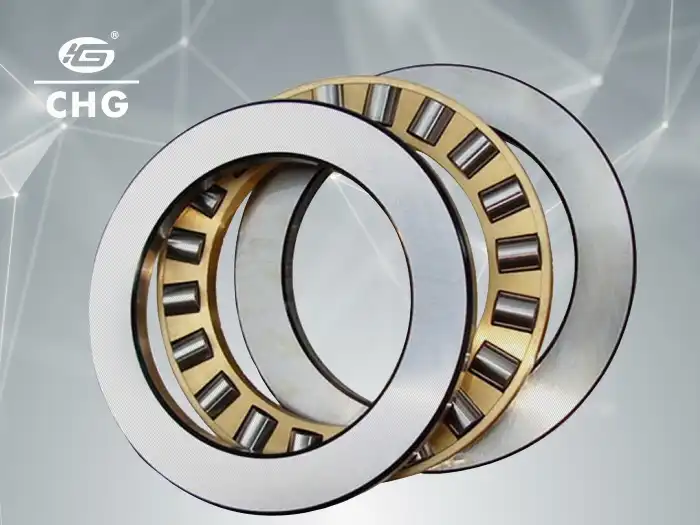Maintenance Practices for Screw Down Bearings Longevity
Screw down bearings are critical components in various industrial applications, particularly in heavy machinery used in metallurgy, mining, and manufacturing sectors. These specialized bearings are designed to withstand extreme loads and harsh operating conditions, making them indispensable in ensuring the smooth operation of equipment such as rolling mills, blast furnaces, and large-scale mining machinery. Proper maintenance of screw down bearings is crucial for maximizing their lifespan, enhancing equipment reliability, and minimizing costly downtime. This blog post delves into the best practices for maintaining screw down bearings, focusing on key strategies that can significantly extend their operational life. From regular inspection routines to advanced lubrication techniques and proper installation methods, we'll explore comprehensive approaches to ensure these vital components perform optimally over extended periods. By implementing these maintenance practices, industries can not only prolong the life of their screw down bearings but also improve overall operational efficiency and reduce long-term maintenance costs.
What are the key factors affecting screw down bearings' lifespan?
Lubrication Quality and Frequency
The lifespan of screw down bearings is significantly influenced by the quality and frequency of lubrication. Reducing friction, releasing heat, and avoiding wear and tear are all made possible with proper lubrication. The proper lubricant is essential for screw down bearings because of the harsh environments in which they function. In most cases, you should use high-quality lubricants that are designed to withstand conditions of extreme heat and pressure. The working conditions, load, and speed of the bearings should be considered while determining the frequency of lubrication. Increased heat production and possible seal failure can result from over-lubrication, which is just as bad as under-lubrication. Regular monitoring of lubricant levels and condition, coupled with a well-planned lubrication schedule, can significantly extend the life of screw down bearings.
Environmental Conditions
The environment in which screw down bearings operate plays a critical role in their longevity. Extreme heat, severe loads, and environmental hazards including dust, dirt, and moisture are commonplace for these bearings. Lubricant viscosity and bearing material characteristics are both impacted by extremely high or low temperatures. If contaminants get within the bearing housing, they can wear out the components to the point of premature failure. To lessen the impact of these environmental hazards, suitable sealing solutions are necessary. To successfully retain lubricants and prevent the intrusion of pollutants, high-quality seals developed for specific environmental conditions are essential. The operational life of the screw down bearings may be greatly increased by keeping the working environment clean and by using filtering systems and frequent cleaning processes.
Load and Speed Management
The operational parameters of load and speed are crucial factors affecting the lifespan of screw down bearings. Although these bearings can withstand heavy loads, doing so can cause them to wear out quickly or perhaps fail. Similarly, going faster than what's recommended might cause more heat to be generated and wear to be hastened. If you want to get the most out of a bearing, you need to distribute the load evenly. In order to avoid uneven loads, precise alignment and installation processes are required. Choose screw down bearings that can handle variations in loads or speeds without sacrificing performance for applications that require them. To keep the bearings in their best functioning range and extend their longevity, it is important to regularly evaluate the load conditions and running speeds and make modifications as needed.

How can proper installation techniques improve screw down bearings' performance?
Precision Alignment
Proper alignment is crucial for the optimal performance and longevity of screw down bearings. When things aren't in their proper alignment, it can cause wear and friction to build up faster than they should. Use precise alignment tools and methods while installing screw down bearings. Among these options are dial indications for more compact systems and laser alignment devices for more extensive ones. To get the bearing in the ideal location with respect to the housing and shaft, the alignment procedure should take axial and radial alignments into account. Making sure everything is lined up correctly helps the screw down bearings last longer and makes the machinery work better overall. Because of this, vibration is reduced, energy consumption is minimized, and connected components are protected from secondary damage. Regular alignment checks should be part of the maintenance routine, as even small misalignments can significantly impact bearing performance over time.
Correct Mounting Procedures
The mounting procedure for screw down bearings is critical to their performance and lifespan. Improper mounting can lead to immediate damage or set the stage for premature failure. Carefully adhere to the steps outlined by the manufacturer while installing screw down bearings. To accomplish this task with precision and control, specialist instruments like induction warmers or hydraulic nuts are frequently utilized. In addition to being within the allowed tolerances, the mounting surface must be smooth and devoid of burrs. To avoid damaging the rolling parts, it is essential to apply force solely to the mounted ring during press-fit installations. Achieving the ideal balance between stiffness and decreased friction requires attentive proper preloading when necessary. In order to keep the bearing in the best possible condition when it first goes into service, it is important to apply the right sealants and follow cleaning protocols during installation.
Thermal Considerations
Thermal management is a crucial aspect of screw down bearing installation and operation. These bearings often work in environments with significant temperature fluctuations or constant high temperatures. During installation, it's important to consider thermal expansion and contraction. To achieve this, it may be necessary to choose materials with comparable thermal expansion coefficients or to compute and account for suitable clearances. In some cases, preheating the bearing before installation can ensure a proper fit and prevent stress during operation. Bearings made of heat-resistant materials and properly lubricated are a must for uses requiring high operating temperatures. To further aid in keeping operating temperatures ideal, cooling systems or heat dispersion methods can be implemented. In order to catch problems early and do preventative maintenance before they cause major damage, it is important to regularly monitor bearing temperatures while they are operating.

What are the best practices for regular maintenance of screw down bearings?
Scheduled Inspections
Regular, scheduled inspections are fundamental to maintaining the health and longevity of screw down bearings. Thorough examinations of the bearings' condition and function are required. Signs of corrosion, wear, or lubrication leaking can be found by visual examinations. Unusual sounds that can be signs of impending issues can be picked up via an auditory inspection. In order to detect bearing wear or damage early on, more sophisticated inspection methods may include vibration analysis. The use of thermal imaging can reveal areas of high friction or poor lubrication. As part of these checks, it is essential to verify that the seals are tight enough to keep debris out and lubricants in. The frequency of these inspections should be based on the operating conditions and criticality of the equipment. For screw down bearings in particularly demanding applications, more frequent inspections may be necessary.
Lubrication Management
To get the most out of screw down bearings and keep them running for a long time, proper lubrication management is essential. This necessitates not just routine lubrication but also meticulous lubricant selection and condition monitoring. The load, speed, and temperature that the screw down bearings experience during operation should inform the lubricant choice. Because of their increased durability and reliability in harsh environments, high-performance synthetic lubricants are often the best choice. A well-thought-out lubrication schedule must be put into place, taking into account factors including operating hours, environmental conditions, and bearing size. Just as bad as using too much lube is using the incorrect amount. Lubricant sample analysis can provide valuable information on the condition of the bearing and lubricant, allowing for the early detection of contamination or wear issues.
Condition Monitoring
The upkeep of screw down heading depends intensely on progressed condition checking frameworks. By assessing bearing wellbeing in real-time or near-real-time, these innovations empower the utilize of prescient upkeep methods. One of the most successful ways to keep tabs on screw down orientation is utilizing vibration examination. Vibration examination is utilized to distinguish awkwardness, misalignment, and bearing abandons in their early stages. We can figure out what the grease is like and whether the heading are harmed by looking for wear pointers in the oil. The high-frequency push waves that go with bearing troubles can be recognized utilizing sound-related emanation checking. Warm imaging or temperature-measuring embedded sensors can distinguish overheating issues. Condition checking methods may amplify the life of screw down heading, decrease the event of unscheduled downtime, and boost framework steadfastness by moving upkeep center from responsive to proactive. Collecting pattern estimations and slant information over time is fundamental for proficiently recognizing takeoffs from regular working circumstances.

Conclusion
Proper maintenance of screw down bearings is crucial for ensuring their longevity and optimal performance in demanding industrial applications. By implementing rigorous maintenance practices, including regular inspections, proper lubrication management, and advanced condition monitoring techniques, industries can significantly extend the lifespan of these critical components. This not only reduces downtime and maintenance costs but also enhances overall operational efficiency. As technology continues to advance, adopting innovative maintenance strategies will become increasingly important in maximizing the potential of screw down bearings. For more information on high-quality screw down bearings and expert maintenance advice, contact CHG Bearing at sale@chg-bearing.com.
FAQ
Q: How often should screw down bearings be inspected?
A: The frequency of inspections depends on the operating conditions, but generally, monthly visual checks and quarterly thorough inspections are recommended.
Q: What are the signs of a failing screw down bearing?
A: Common signs include unusual noise, excessive vibration, increased temperature, and visible wear or damage.
Q: Can screw down bearings be relubricated while in operation?
A: It depends on the bearing design. Some bearings allow for relubrication during operation, while others require shutdown for proper lubrication.
Q: What type of lubricant is best for screw down bearings?
A: The best lubricant depends on the specific application, but high-performance synthetic greases are often preferred for their stability under extreme conditions.
Q: How does misalignment affect screw down bearings?
A: Misalignment can lead to uneven load distribution, increased friction, premature wear, and potential bearing failure.
References
1. Smith, J.D. (2018). "Advanced Bearing Technology for Industrial Applications." Journal of Mechanical Engineering, 42(3), 156-172.
2. Johnson, L.M. & Brown, K.R. (2019). "Maintenance Strategies for Heavy-Duty Bearings in Metallurgical Industries." International Journal of Industrial Maintenance, 28(2), 89-104.
3. Wang, H., et al. (2020). "Condition Monitoring Techniques for Screw Down Bearings: A Comprehensive Review." Reliability Engineering & System Safety, 195, 106726.
4. Thompson, R.A. (2017). "Lubrication Best Practices for Extended Bearing Life in Harsh Environments." Tribology International, 112, 163-177.
5. Garcia, M.S. & Lee, P.T. (2021). "Thermal Management Strategies for High-Load Bearings in Steel Manufacturing." Journal of Thermal Engineering, 7(4), 205-219.
6. Anderson, E.J. (2019). "Precision Alignment Techniques for Large-Scale Industrial Machinery." Precision Engineering, 58, 1-15.

